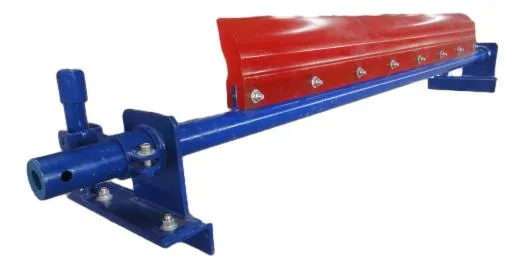types of pulley lagging
Types of Pulley Lagging An Overview
Pulley lagging is a critical component in the materials handling industry, particularly in mining, quarrying, and other heavy industrial applications. It refers to the protective covering that is applied to the surface of pulleys, which serves numerous essential functions, including enhancing grip, reducing wear, and prolonging the life of the pulley system. This article will explore the various types of pulley lagging, their applications, benefits, and considerations for selection.
1. Rubber Lagging
Rubber lagging is one of the most commonly used types of pulley lagging due to its excellent grip and durability. This type of lagging is typically made from high-quality rubber compounds, which provide a high co-efficient of friction. This means that rubber lagging can significantly enhance the traction between the drive belt and the pulley, reducing slippage and preventing belt wear. Additionally, rubber lagging can help to absorb shock and vibrations, further extending the life of both the pulley and the associated machinery. Common applications include conveyor systems in mining and bulk material handling.
Steel lagging offers remarkable durability and is ideal for heavy-duty applications. Its high wear resistance makes it suitable for environments where regular wear and tear would quickly degrade other materials. Steel lagging is often used in applications where material transfer involves abrasive materials. It helps to maintain grip and prevent slippage, similar to rubber lagging, but with increased longevity in harsh operating conditions. Although the initial installation cost for steel lagging is higher, its lifespan can make it a more economical choice over time.
3. Ceramic Lagging
Ceramic lagging combines the best features of rubber and steel. It typically involves embedding ceramic tiles within a rubber matrix, providing an incredibly high coefficient of friction and outstanding wear resistance. This type of lagging is particularly advantageous in situations where high levels of abrasion and impact are present. For instance, in coal and mineral transfer, ceramic lagging reduces wear on the punleys and contributes to better material handling efficiency. The durability of ceramic materials means that maintenance requirements can be minimal, making it an ideal choice for constant and heavy usage.
types of pulley lagging

4. Urethane Lagging
Urethane lagging has gained popularity for its unique properties that bridge the gap between rubber and ceramic. Urethanes offer excellent abrasion resistance and elasticity, delivering a high coefficient of friction to prevent belt slippage while also providing shock absorption. This makes urethane lagging ideal for applications involving varying loads and speeds. Additionally, it is lighter than rubber and ceramic options, which can contribute to less strain on the pulleys and related machinery. Urethane lagging is suitable for various environments, from mining to food processing, where hygiene and contamination are concerns.
5. Custom Lagging Solutions
In recent years, there has been an increasing trend towards custom lagging solutions that are tailored to specific operational needs. Many manufacturers now offer custom blends of materials, textures, and patterns to optimize performance in unique environments. Factors like temperature, humidity, and the nature of the materials being handled dictate the choice of lagging solution. Custom lagging can maximize efficiency, reduce maintenance costs, and enhance safety, providing a competitive edge in today's fast-paced industry.
Conclusion
In summary, the choice of pulley lagging is paramount for ensuring optimal performance and longevity of pulley systems. The right type of lagging can prevent slippage, reduce wear and tear, and improve material handling efficiency. While rubber, steel, ceramic, and urethane lagging each have their distinct advantages, the choice ultimately depends on the specific operational environment, load requirements, and material characteristics being handled.
When selecting pulley lagging, it is essential to consider not only the initial cost but also the long-term benefits in terms of maintenance and replacement costs. Investing in the right type of lagging can lead to significant savings and enhance overall productivity. As industries continue to evolve and demand more efficient solutions, advancements in lagging technologies will likely play a crucial role in meeting these challenges head-on.
-
Impact Roller for Belt Conveyor – Durable Solutions for IndustryNewsNov.24,2025
-
Rubber Conveyor Rollers – Quiet, Durable, Sealed BearingsNewsNov.24,2025
-
Industrial Conveyor Belt Rollers: Durable Solutions for Harsh EnvironmentsNewsNov.24,2025
-
Idler Rollers for Belt Conveyors | Durable, Low-Noise OEMNewsNov.24,2025
-
Durable Rubber Conveyor Belt Rollers for Industrial UseNewsNov.24,2025
-
Ceramic Lagging Conveyor Pulley – Anti-Slip, Wear-ResistantNewsNov.17,2025






























